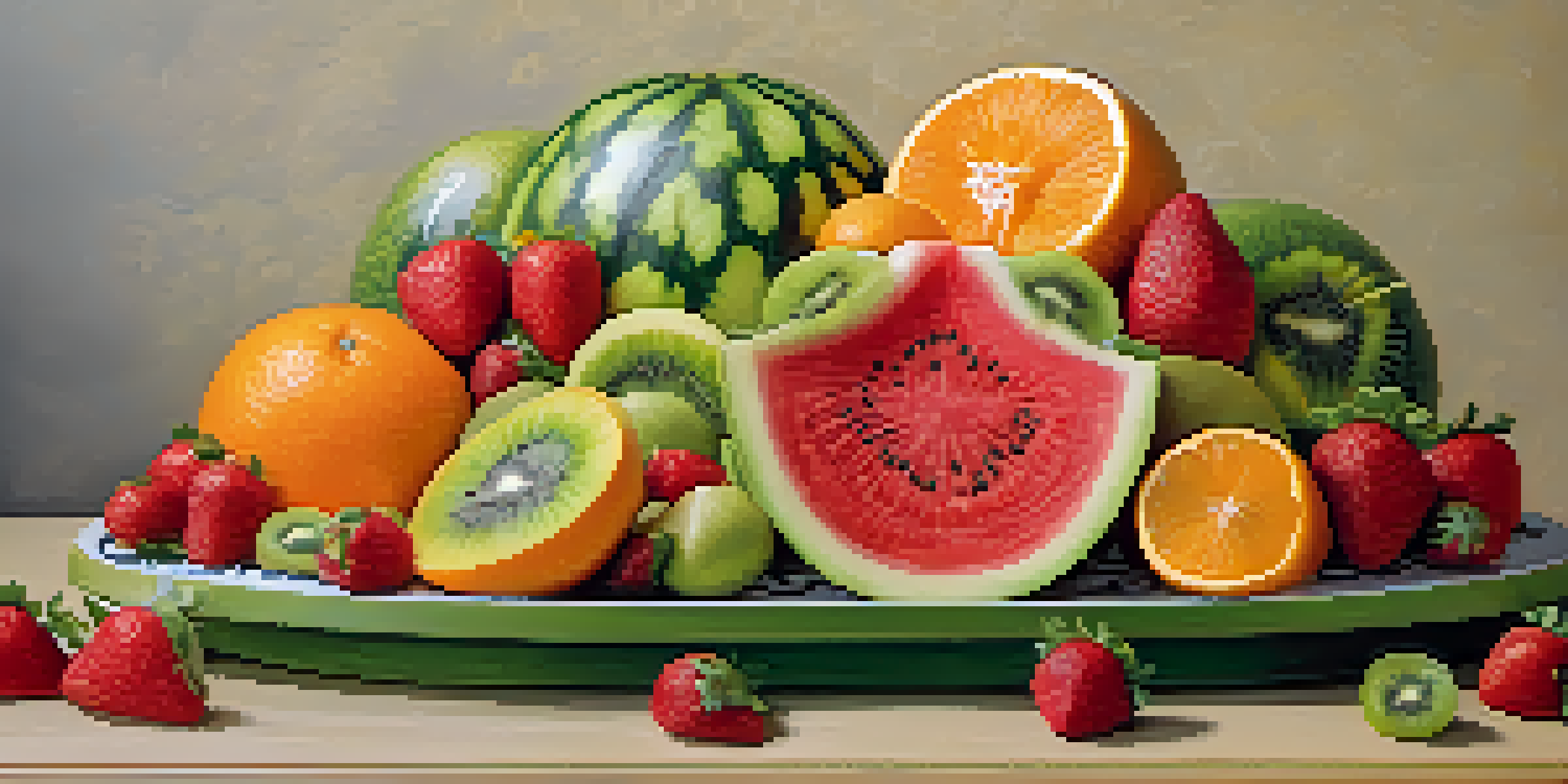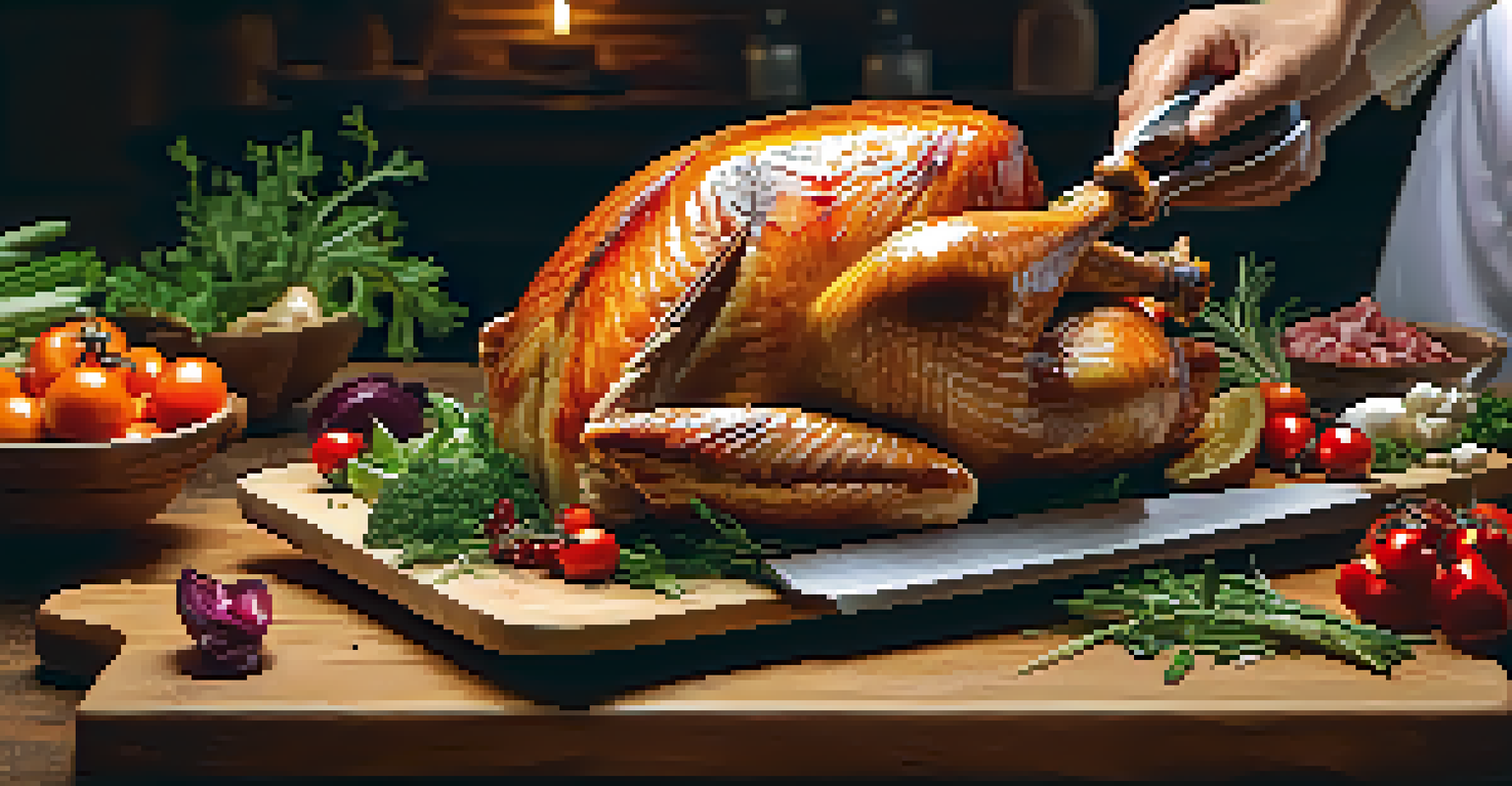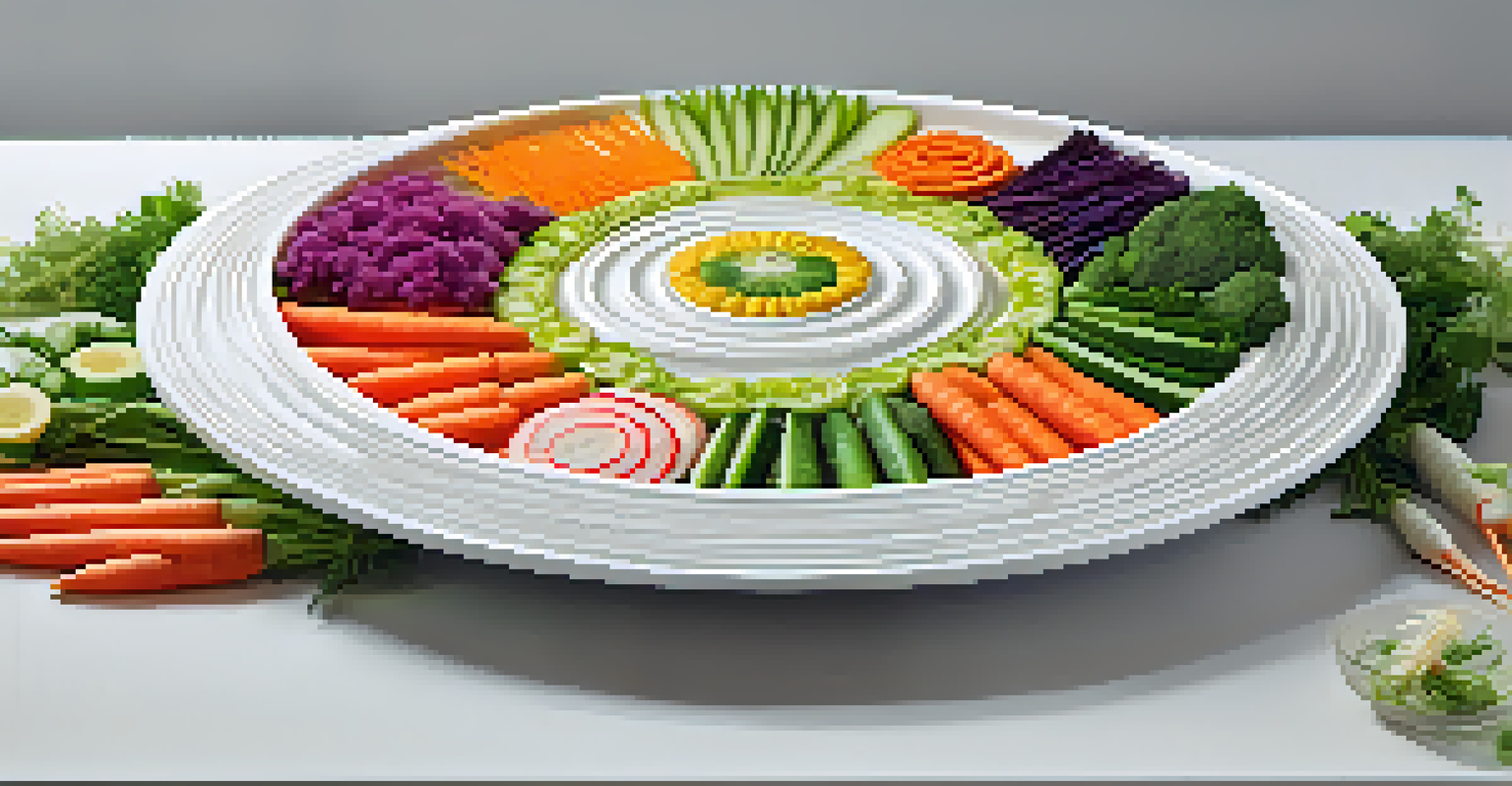Culinary Carving Styles: From Traditional to Modern Techniques

Understanding Culinary Carving: An Overview
Culinary carving is the art of cutting and shaping food into visually appealing presentations. It's not just about aesthetics; it's about enhancing the dining experience and showcasing creativity. From fruits and vegetables to meats and cheeses, carving can transform a simple dish into a stunning centerpiece.
Cooking is like love. It should be entered into with abandon or not at all.
This practice has deep roots in various cultures, often reflecting the traditions and techniques passed down through generations. By exploring the history of culinary carving, we can appreciate how these styles have evolved over time. Understanding the basics of carving can empower chefs and home cooks alike to elevate their culinary skills.
In this article, we'll journey through the different styles of culinary carving, highlighting both traditional and modern techniques. Whether you're a seasoned chef or a kitchen novice, there's something to learn from the rich tapestry of carving artistry.
Traditional Carving Techniques: A Rich Heritage
Traditional carving techniques have stood the test of time, often rooted in cultural significance. For instance, Japanese fruit carving, known as 'Mukimono,' is a delicate art that transforms fruits into intricate shapes, often used in ceremonies and celebrations. Such techniques reflect the deep respect for nature and aesthetics prevalent in many cultures.

Another classic method is the French 'Sculpture de Légumes,' where vegetables are meticulously carved into beautiful designs for garnishing. These traditional forms of carving not only demonstrate skill but also serve a practical purpose in enhancing the visual appeal of dishes. They invite diners to engage with their meals in a more meaningful way.
Culinary Carving Enhances Dining
Culinary carving transforms food into visually stunning presentations, enriching the overall dining experience.
While these techniques may require practice and patience, they provide a solid foundation for anyone interested in culinary carving. By mastering traditional techniques, one can gain a deeper appreciation for the artistry involved and how they can be adapted in modern cooking.
Modern Culinary Carving: Innovation and Creativity
Modern culinary carving has taken traditional techniques and infused them with contemporary flair. Chefs today often experiment with new tools and methods, pushing the boundaries of what can be achieved with food. For example, using laser cutters or specialized knives allows for precision that was once unimaginable.
Food is art, and cooking is a creative expression of that art.
Moreover, the modern trend of food plating emphasizes artistry, where the presentation is as important as the taste. Chefs are now creating whimsical designs that tell a story, making each dish a unique experience. This innovation not only delights the eye but also engages the palate, as flavors are often paired with the visual elements.
Social media has also played a significant role in popularizing modern carving techniques. Platforms like Instagram allow chefs and food enthusiasts to showcase their creations, inspiring others to explore their own carving skills. This sharing of ideas fosters a community of creativity and passion for culinary artistry.
Essential Tools for Culinary Carving
Having the right tools is crucial for successful culinary carving. A good quality knife is the cornerstone of any carving toolkit, as it allows for precision cuts and intricate designs. Specialty knives, such as paring knives or carving forks, can make a significant difference in the ease and quality of your work.
In addition to knives, tools like vegetable peelers, zesters, and even molds can enhance your carving abilities. These can help create unique shapes and textures, adding depth to your presentations. Investing in a few quality tools can elevate your carving from basic to extraordinary, allowing you to explore your creativity fully.
Traditional Techniques Inspire Modern Art
Traditional carving methods provide a foundation for contemporary chefs to innovate and express creativity in their dishes.
Lastly, don't overlook safety when carving. Using cutting boards with non-slip surfaces and practicing proper knife techniques can prevent accidents. The right tools combined with safety measures will ensure a more enjoyable and productive carving experience.
Fruit and Vegetable Carving: A Delicious Art Form
Fruit and vegetable carving is perhaps the most popular form of culinary carving, celebrated for its vibrant colors and intricate designs. From stunning watermelon sculptures to delicate radish flowers, this art form invites creativity and imagination. Many cultures, especially in Southeast Asia, have perfected these techniques, often showcasing them at festivals and celebrations.
The process involves not just cutting but also understanding the structure of the food being carved. For example, a watermelon can be transformed into a stunning centerpiece by carefully removing sections to create layers. The challenge lies in balancing aesthetics with the integrity of the fruit, ensuring that the final product is both beautiful and edible.
As you explore fruit and vegetable carving, you'll find that practice is key. Start with simple designs and gradually work your way up to more complex shapes. With time and effort, you’ll be able to impress your friends and family with your edible masterpieces.
Meat Carving Techniques: Mastering the Art
Meat carving holds its own unique place in culinary carving, often associated with holiday feasts and celebrations. Mastering the art of meat carving involves not just skill but also an understanding of the cuts of meat and how they respond to different carving techniques. Knowing the grain of the meat can help you achieve the best texture and flavor in each slice.
Common techniques include the classic 'slicing' method, where meat is cut into thin, even pieces. A well-carved roast not only looks appealing but also ensures that each bite is tender and flavorful. Additionally, garnishing with herbs or sauces can enhance the presentation, making the dish even more inviting.
Tools and Safety are Essential
Using the right tools and practicing safety measures are crucial for successful and enjoyable culinary carving.
Whether you're preparing a Thanksgiving turkey or a Sunday roast, honing your meat carving skills can elevate your culinary repertoire. With practice, you'll gain confidence, allowing you to carve beautifully with ease, impressing everyone at your table.
The Role of Culinary Carving in Presentation
Presentation plays a vital role in the culinary world, and carving techniques are a significant component of this art. A beautifully carved dish can create a memorable dining experience, enticing guests even before they take the first bite. The visual appeal of a dish often enhances anticipation and enjoyment, showcasing the chef's attention to detail.
Moreover, culinary carving can communicate themes and concepts, adding layers of meaning to a dish. For instance, carving fruits and vegetables into seasonal motifs can reflect the essence of a particular holiday or celebration. This thoughtful approach to presentation can transform a meal into an event, inviting diners to connect more deeply with their food.

In a world where dining experiences are increasingly shared on social media, the importance of presentation cannot be overstated. Culinary carving allows chefs to create Instagram-worthy dishes that are as delightful to look at as they are to eat, bridging the gap between food and art.